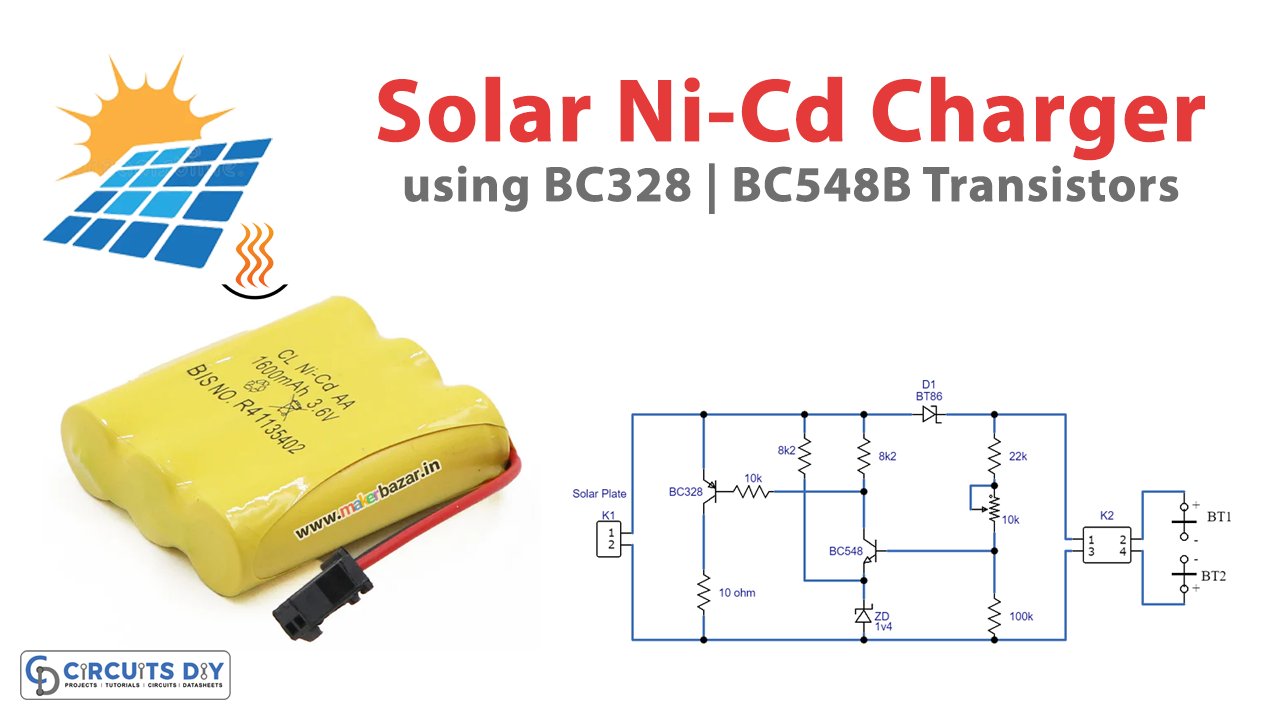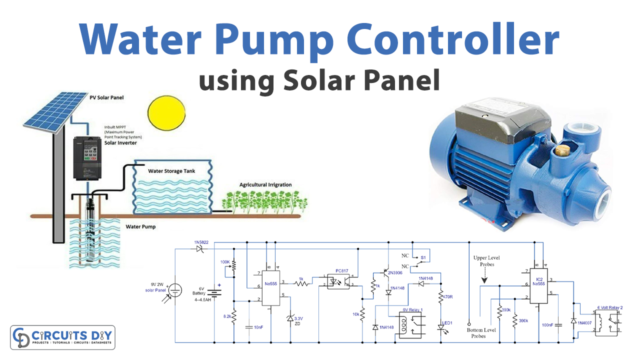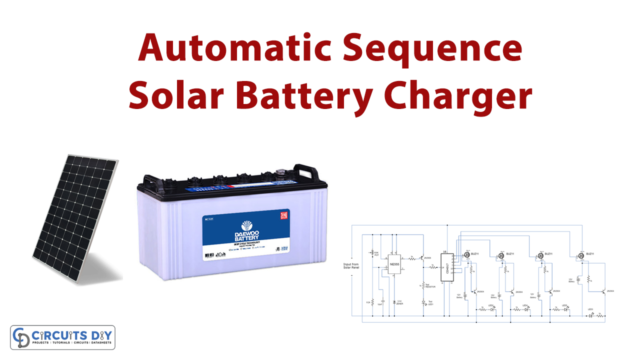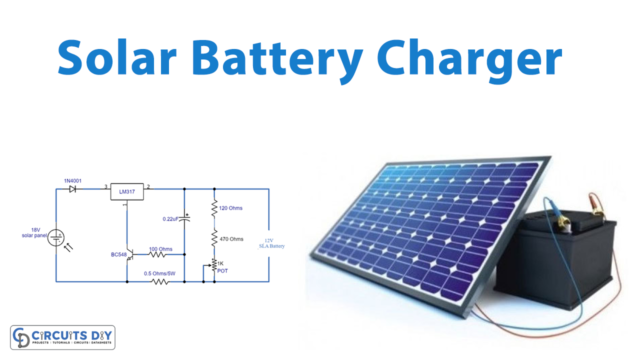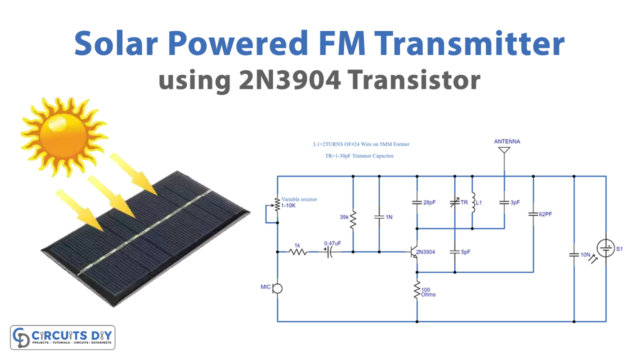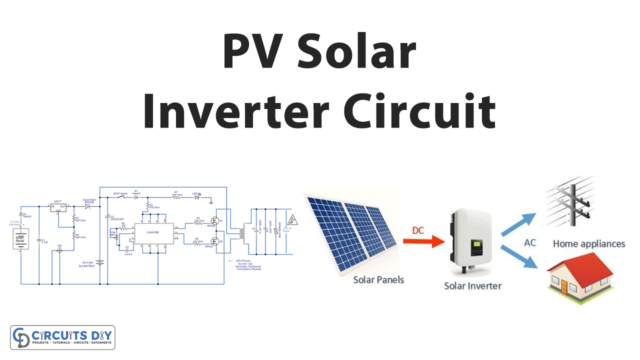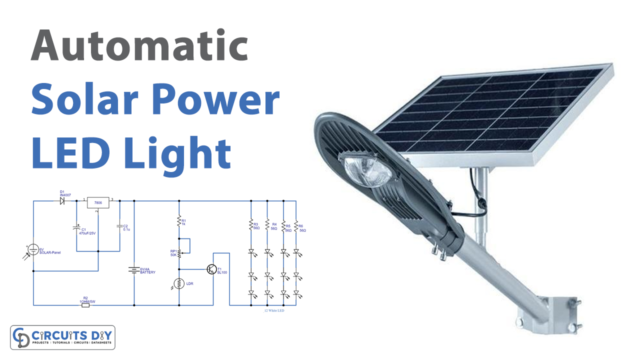Are you looking for a cost-effective way to charge your Ni-Cad batteries? Look no further than this solar Ni-Cd charger circuit! Unlike traditional charger circuits that utilize only one Schottky diode and a solar panel, this circuit prevents overcharging and is simple to build with just two transistors and several passive components.
Hardware Required
| S no | Components | Value | Qty |
|---|---|---|---|
| 1 | Transistor | BC328 BC548B | 1 1 |
| 2 | Resistor | 8K2, 22k, 10k, 10, 100k | 2, 1, 1, 1, 1 |
| 3 | V. Resistor | 10K | 1 |
| 4 | Zener Diode | BAT86 1V4 | 1 1 |
| 5 | Battery | – | 1 |
| 6 | Solar Panel | – | 1 |
Circuit Diagram

Building and Setting Up the Circuit
Building this circuit is simple and can be done on a protoboard. Use screw terminals for the input and output connectors to make connecting the leads from the solar panels and batteries to the board easier.
When setting up the circuit, it is best to replace the batteries with an adjustable DC power supply momentarily and configure the output to 2.88 V. Connect a voltmeter across power resistor R7 and place the solar panel in the brightest sunlight. Set the preset to maximum resistance, then gradually reverse the dial until the voltmeter registers a few volts, indicating that T1 is conducting.
Operation of the Circuit: How it Works
The circuit is designed to monitor the voltage across the batteries constantly, and when it exceeds a specific level, a power resistor is connected in parallel with the solar panel. This causes the panel’s output voltage to drop, halting further charging the batteries and indicating that they are fully charged.
To achieve this, the circuit around T2 monitors the voltage while the Zener diode D2 shifts the emitter voltage of T2 around 1.4 V.
A potential divider R3, P1, and R6 provide the base voltage to T2. When this voltage exceeds 2 Volts, T2 conducts, pulling the base of T1 lower through resistor R5 and forcing it to conduct.
Power resistor R7 is used to prevent the current from the solar panel, allowing its voltage to drop and stopping the batteries from being charged. We can achieve the precise final voltage for the NiCd batteries by adjusting preset P1 based on T2 and D2’s components.
Final Thoughts
With a compact size and low cost, solar cells are an excellent option for building a homemade Ni-Cd battery charger. Utilizing this innovative solar Ni-Cd charger circuit can prevent overcharging and ensure your batteries are always fully charged and ready to use.


